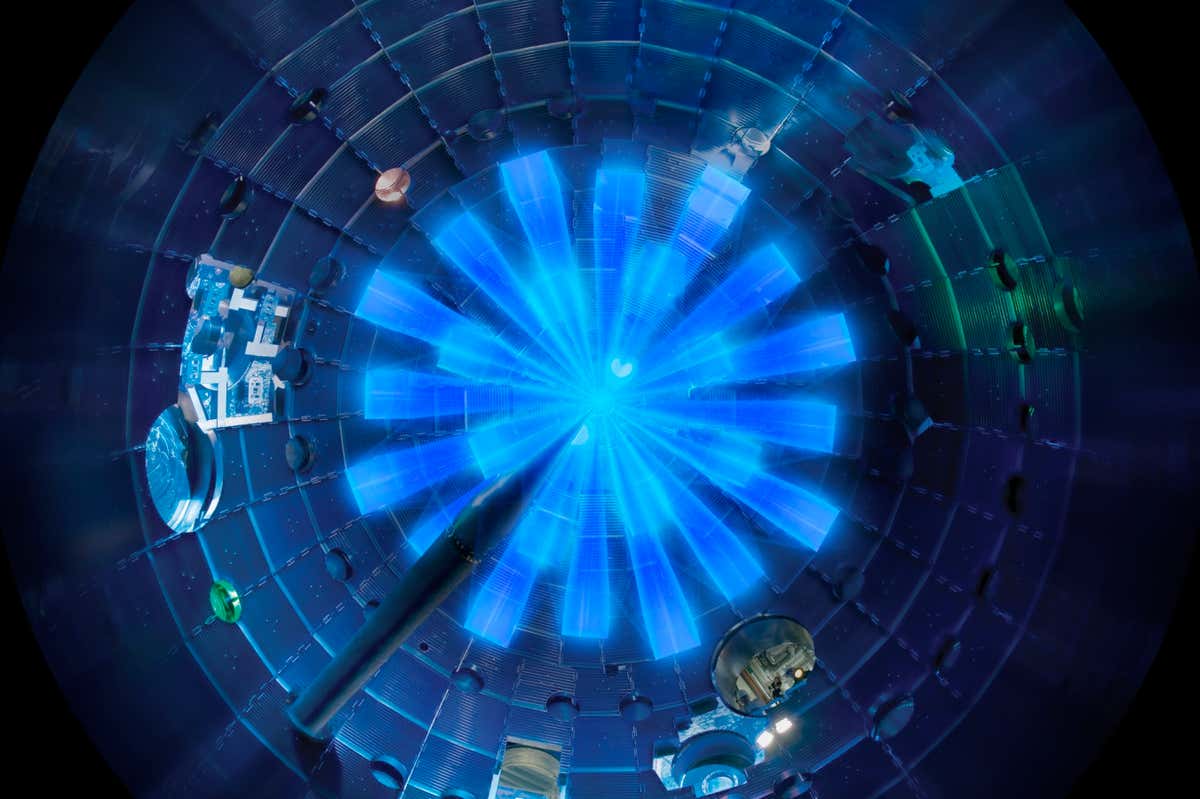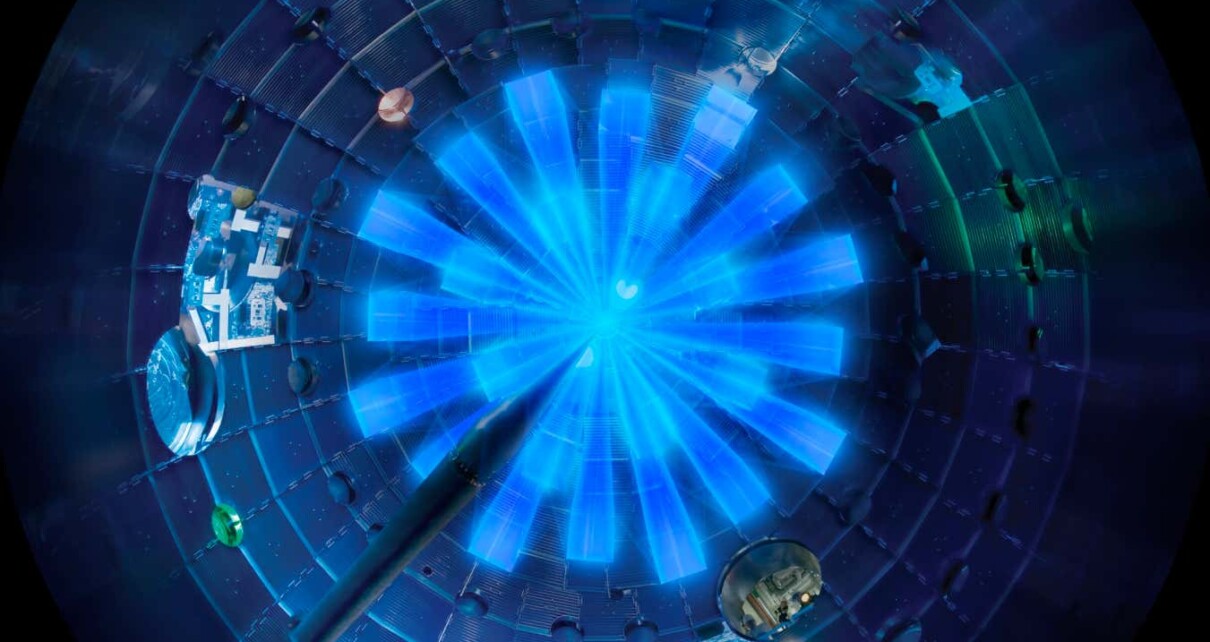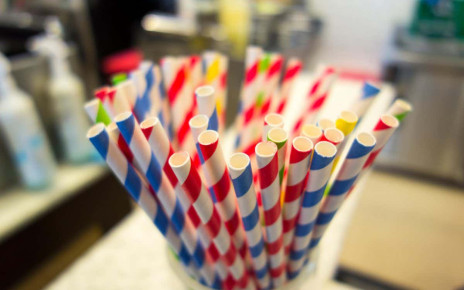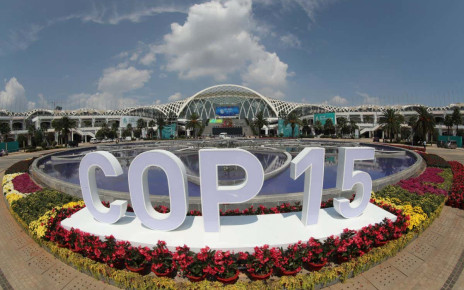[ad_1]

Fusion experiments at the US National Ignition Facility have achieved a significant milestone
Philip Saltonstall
Scientists have confirmed that a fusion reaction in 2022 reached a historic milestone by unleashing more energy than was put into it – and subsequent trials have produced even better results, they say. The findings, now published in a series of papers, give encouragement that fusion reactors will one day create clean, plentiful energy.
Today’s nuclear power plants rely on fission reactions, where atoms are smashed apart to release energy and smaller particles. Fusion works in reverse, squeezing smaller particles together into larger atoms; the same process powers our sun.
Fusion can create more energy with none of the radioactive waste involved in fission, but finding a way to contain and control this process, let alone extract energy from it, has eluded scientists and engineers for decades.
Experiments to do this using capsules of deuterium and tritium fuel bombarded with lasers – a process called inertial confinement fusion (ICF) – began at the Lawrence Livermore National Laboratory (LLNL) in California in 2011. The energy released was initially only a tiny fraction of the laser energy put in, but it gradually increased until an experiment on 5 December 2022 finally passed the crucial milestone of breaking even. That reaction put out 1.5 times the laser energy required to kickstart it.
In one paper, the lab’s National Ignition Facility (NIF) claims that trial runs since then have yielded even greater ratios, peaking at 1.9 times the energy input on 4 September 2023.
Richard Town at LLNL says the team’s checks and double-checks since the 2022 result have proved that it “wasn’t a flash in the pan”, and he believes there is still room for improvement.
Even with the hardware currently installed at NIF, Town says it is likely that yields could be improved, but if the lasers can be upgraded – which would take years – things could be pushed even further. “A bigger hammer always helps,” he says. “If we can get a bigger hammer, I think we could get to target gains of about roughly 10.”
But Town points out that NIF was never built to be a prototype reactor and isn’t optimised for boosting yields. Its main job is to provide critical research for the US nuclear weapons programme.
Part of this work involves exposing electronics and payloads from nuclear bombs to the neutron bombardment that takes place when ICF reactions occur, to check that they will function in the event of all-out nuclear war. The danger of an electronics failure was highlighted during a test in 2021 when NIF fired and wiped out all lights across the site, plunging researchers into darkness. “Those lights were not hardened, but you can sort of imagine a military component that has to survive a much higher dosage,” says Town.
This mission means some research from the project remains classified; even the concept of ICF was a classified secret into the 1990s, says Town.
The announcement that ICF had reached the break-even point in 2022 provided hope that fusion power was drawing closer, and this will be bolstered by news that further progress has been made. But there are caveats.
Firstly, the energy output falls far short of what would be needed for a commercial reactor, barely creating enough to heat a bath. Worse than that, the ratio is calculated using the lasers’ output, but to create that 2.1 megajoules of energy, the lasers draw 500 trillion watts, which is more power than the output of the entire US national grid. So these experiments break even in a very narrow sense of the term.
Martin Freer at the University of Birmingham, UK, says these results are certainly not an indication that practical fusion reactors can now be built. “There’s still science to be done,” he says. “It’s not like we know the answers to all of this and we don’t need researchers any more.”
Freer says that as scientific experiments progress, they throw up engineering challenges to create better materials and processes, which will allow better experiments and more progress. “There is a chance that we will have fusion,” he says. “But the challenges that we have are pretty steep, scientifically.”
Aneeqa Khan at the University of Manchester, UK, agrees that recent progress in fusion research is positive, but stresses that it will be decades before commercial power plants are operational – and even that will hinge on global collaboration and a concerted effort to train more people in the field. She warns against interpreting progress in fusion research as a possible solution to tackle our reliance on energy from fossil fuels.
“Fusion is already too late to deal with the climate crisis. We are already facing the devastation from climate change on a global scale,” says Khan. “In the short term, we need to use existing low-carbon technologies such as fission and renewables, while investing in fusion for the long term, to be part of a diverse low-carbon energy mix. We need to be throwing everything we have at the climate crisis.”
Topics:
[ad_2]
Source link




